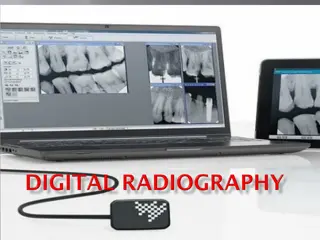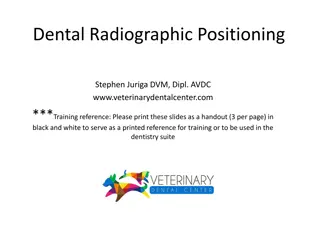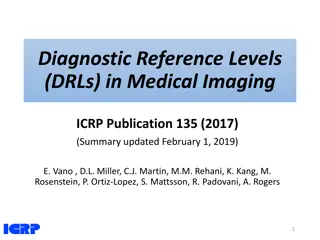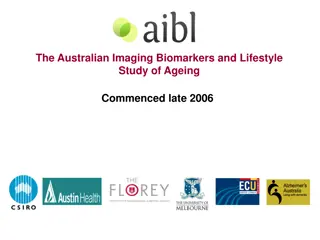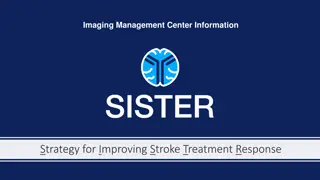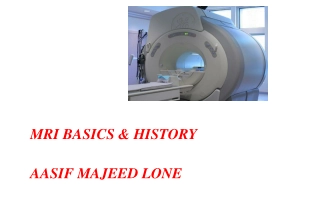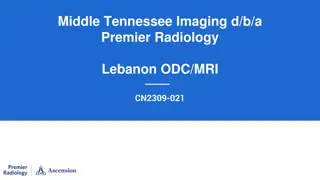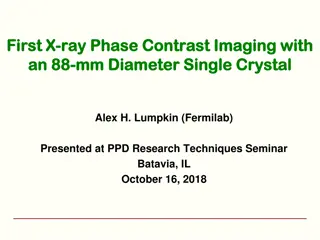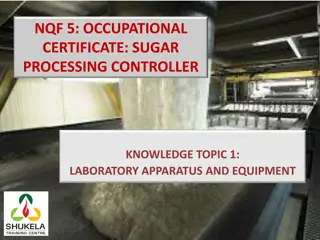Radiographic Imaging Processing Equipment Overview
The chapter delves into processing equipment for radiographic imaging, covering materials selection, manual processor construction, controls like thermostat regulators and inlet valves, and typical manual processing unit details. The content emphasizes factors like material resistance and cost, as well as mechanical adaptability considerations. Manual processors typically feature strong steel or chemically resistant iron frameworks and utilize polyvinyl chloride for tank panels.
Download Presentation

Please find below an Image/Link to download the presentation.
The content on the website is provided AS IS for your information and personal use only. It may not be sold, licensed, or shared on other websites without obtaining consent from the author. Download presentation by click this link. If you encounter any issues during the download, it is possible that the publisher has removed the file from their server.
E N D
Presentation Transcript
CHAPTER SEVEN PROCESSING EQUIPMENT Radiographic Imaging By Rs. 1
Materials for processing equipment The following factors are relevant The material should have no effect on the photographic properties of the solution concerned The material should be capable of resisting the most corrosive fluid with which it is likely to be in contact The period of the time during which a material is likely to be exposed to chemical action and the probable dilution of the solution concerned The cost of the material The mechanical adaptability of the material for constructional purpose Radiographic Imaging By Rs. 2
Processor for manual operation General construction The processor consists of a large master tank which includes certain smaller tanks and divisions A lidded tank for the developer A tank or compartment, usually having a separately tapped cold water supply, which provides a means to rinse films b/n developing and fixing solutions A lidded tank for the fixer A large compartment, which its own cold water inlet- valve, in which developed and fixed films are washed Radiographic Imaging By Rs. 3
Typical manual processing unit Radiographic Imaging By Rs. 4
Controls A thermometer regulator, operating in conjugation with a thermostat and an immersion heated in water jacket has the following functions: To raise the temperature of the water jacket to pre-selected degree To maintain this temperature whilst the unit is operational Radiographic Imaging By Rs. 5
The next three controls are Inlet valves for the rinse Water jacket wash There is an ON/OFF switch for the electrical supply Radiographic Imaging By Rs. 6
Materials Typically a manual processor is constructed on a strong steel, or chemically resistant iron, framework The internal and external faces of the master tank are made panels of polyvinyl chloride(P.V.C) Radiographic Imaging By Rs. 7
The space b/n the inner and outer walls is usually filled with a substance such as expanded polystyrene The edges and corners of the master tank are capped with stainless steel The individual capacities of solution tanks in a processor vary from model to model Radiographic Imaging By Rs. 8
Temperature control In manually operated processors, the developer is the only significant solution of which the working temperature must be closely controlled This control is given by maintaining the temperature of the water jacket at an appropriate level A thermometer regulator allows the heating system of the processor s water jacket to be in continuous operation Radiographic Imaging By Rs. 9
Processing Hangers Films are suspended for processing in metal frames known as hangers These are designed To support the film and allow it to be manipulated without handing of the emulsion To permit a number of film to be processed simultaneously and to keep them separate from each other during the procedure Radiographic Imaging By Rs. 10
There are two general varieties of hangers Channel hangers Tension hangers Hanger bars and clips Hanger bars virtually essential accessories to the use of the channel type of hanger, since they are designed mainly to support the film during drying The position of the clips along the bar is adjustable so that each is appropriate for any size of radiograph Dental hangers: a special type of hanger is used for the processing of dental radiographs Radiographic Imaging By Rs. 11
Processing procedures To process a radiograph by means of manually operated equipment requires much more time than would be taken any automatic processors The following is a description of the procedures to be followed 1. The film is unloaded from its cassette Radiographic Imaging By Rs. 13
2. The film is identified by means of a suitable maker, if this has not already been done before the entry of the cassette to the darkroom 3. The film is placed in a processing hanger of an appropriate size 4. The lid is removed from the developing tank and the loaded hanger is suspended in the solution 5. The time is then noted from a darkroom clock---------4 minutes Radiographic Imaging By Rs. 14
6. If possible, some agitation of the solution should be made by slightly raising and lowering each hanger in turn 7. The lid of the developing tank should now be replaced 8. When the appropriate development time has elapsed, the hanger is removed from the solution and transferred to the rinse tank ----5-10 sec Radiographic Imaging By Rs. 15
9. After rinsing, hanger and film are put in the fixer for an interval of which the duration is much less critical than in case of the developer but should be at least twice the clearing time 10 For the last wet stage of processing, the operator transfers the radiographs in its hanger to the washing section of the processor ----15-20 minutes 11. Finally the film is dried Radiographic Imaging By Rs. 16
Automatic processing History of processing Manual processing -1 hours dry - to dry Stir solution Check temperature Load film on hanger Set timer-time/temperature relationship Develop- agitate film Rinse use acid stop bath Fix -2- 3 times clearing time Wash - 5- 30 minutes use wetting agent Dry 20- 30 min in dust free environment Radiographic Imaging By Rs. 17
Automatic processing To develop, fix, wash, & dry radiographs rapidly, with highly reproducible results The first automatic film processor was introduced in 1942 and required 40 minutes for completion 1942- pako 120 films per hour In 1956 the first roller transport unit was introduced and cut processing time to 6 minutes 1957 Eastman Kodak 15 min dry to dry Processing time gradually decreased to present 45 sec. to 2 min Current Automatic Processor require only 90 seconds Radiographic Imaging By Rs. 18
Automatic processing The automatic film processor mechanically transports exposed X-ray film through the developing, fixing, washing, and drying cycles Automatic processing is quicker than manual processing, and it produces finished radiographs of uniform quality A variety of automatic film processors are in use in the Navy and they can be generally classified as small or large Radiographic Imaging By Rs. 19
AUTOMATIC DARKROOM PROCESSORS Radiographic Imaging By Rs. 20
Large Automatic Film Processor This processor will be located in the darkroom The x-ray film must be inserted in the processor under safelight conditions Large automatic processors can be equipped with dry light loaded, eliminated the need for a darkroom Radiographic Imaging By Rs. 21
PROCESSING UNIT Chemistry Developer 20 25 sec. Reducing agents Electron donner (continues latent image formation process) Phenidone - rapidly produces fine detail shades of gray Hydroquinone - slowly produces heavy densities activator - sodium carbonate, produces alkaline pH for other chemicals to function, swells gelatin Restrainer - potassium bromide, decreases reducing agent activity, prevents chemical fog Radiographic Imaging By Rs. 22
Preservative sodium sulfite, controls oxidation, buffering agent Hardener glutaraldehyde, controls gelatin swelling to minimize risk of physical damage Solvent water, dissolves chemicals and dilutes them to proper concentration Radiographic Imaging By Rs. 23
Fixer - 20 sec. Clearing agent - ammonium thiosulfate, removes undeveloped silver halides from emulsion Activator - acetic acid, provides acidic pH for other chemicals to function, stops reduction Hardener - potassium alum, hardens emulsion to minimize risk of physical damage Preservative - sodium sulfite, maintins pH Solvent - water, dissolves chemicals and dilutes to proper concentration Radiographic Imaging By Rs. 24
SIX SUBSYSTEMS Transport Replenishment Recirculation Temperature control Wash Drying Radiographic Imaging By Rs. 25
PROCESSING UNIT Systems/Functions Transport Purpose is to move film through developer, fixer, wash, and dryer at a controlled and consistent speed without damage. Three subsystems Racks series of rollers held together by end plates, one per tank. Crossovers- smaller series of rollers to guide film from tank to tank. Drive assembly-motor and worm gear to rotate rollers Radiographic Imaging By Rs. 26
Transport system determines the length of time film spends in each tank (along with depth of tank) Film should be fed crosswise whenever possible New chemicals are pumped into tanks based on per inch of film and assumed crosswise orientation Produce uniform, vigorous agitation of chemicals at film surface - promotes uniform processing Squeegee action of last few rollers in each section removes most residual chemicals Radiographic Imaging By Rs. 27
Replenishment Replaces chemicals in the processor depleted through reactions, oxidation, & evaporation Types oVolume (for high-volume processors) activated at entrance by entrance rollers. Developer - 4-5 ml per inch (1.5-2.0 ml per cm) of film Fixer - 6-8 ml per inch (2.5-3.0 ml per cm) of film o Flood (for low-volume processors) - Timer-activated Chemicals - fixer is same & developer is same except no restrainer Mixing - according to recommendations Radiographic Imaging By Rs. 28
Automatic X-ray Film Processor Recirculation Stabilize temperature Agitation solution Mix chemistry Filter solution Radiographic Imaging By Rs. 29
Temperature control Maintains all 3 solutions at compatible temperatures in conjunction with recirculation system o Developer - temperature is extremely critical for proper chemical action 92-96 F (33-35 C) for a 90 sec. processor 83-86 F (28-30 C) for a 2 min. processor o Fixer - not as critical - generally about same as developer o Wash - may be internally controlled by developer solution or externally controlled by a mixing valve Radiographic Imaging By Rs. 30
Wash - 20 sec. Removes fixer & developer from film Temperature is generally about 5 F lower than developer temperature Flow rate of 1-2 gal. /minute, continuous overflow Dry - 25-30 sec. Consists of blower, heating element, tubes (like a big hair dryer) Hot air (110-150 F) forced across both sides of film as it exits processor to set final hardening of emulsion & seal super coat Radiographic Imaging By Rs. 31
Thank you Radiographic Imaging By Rs. 32




